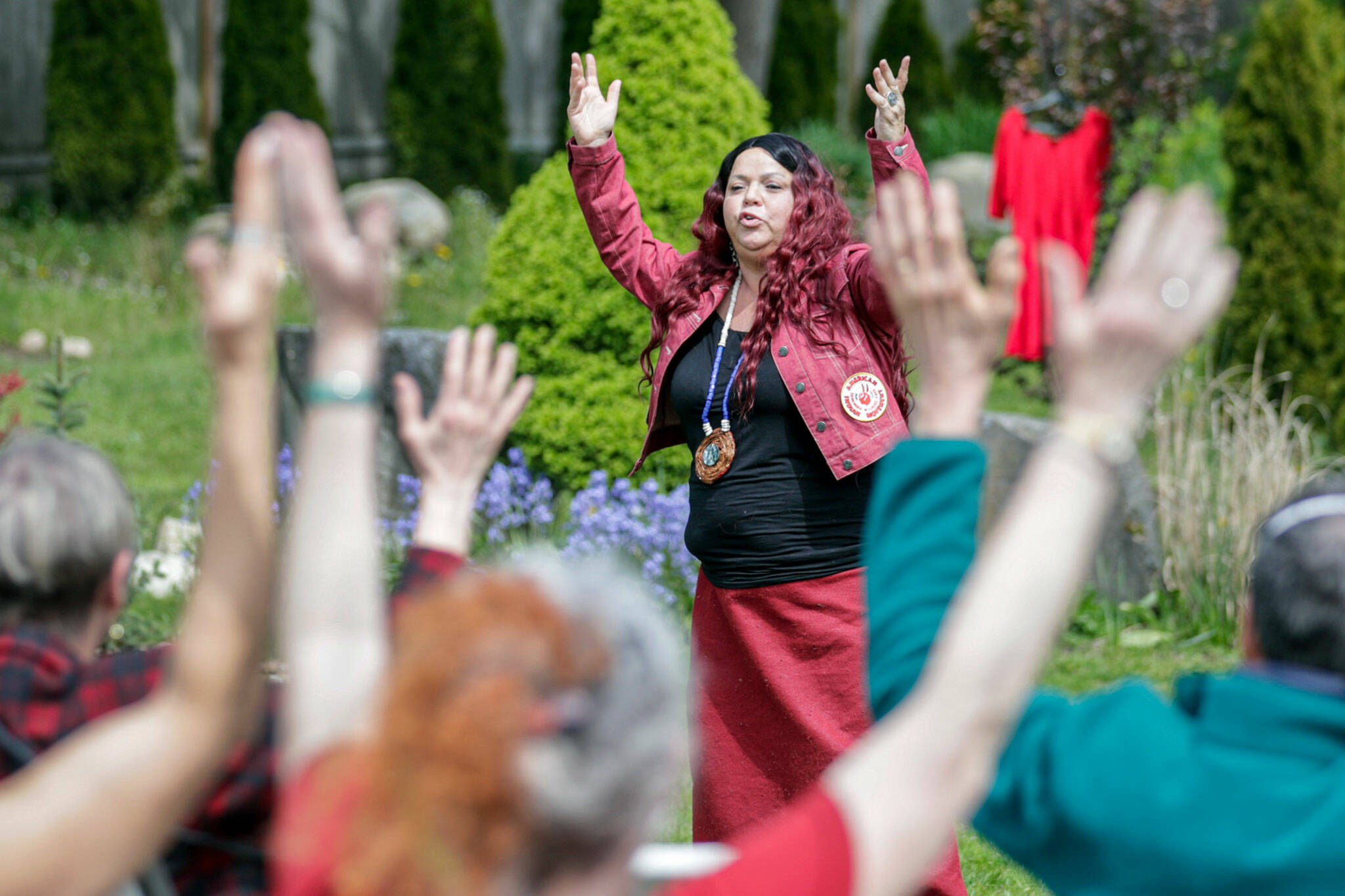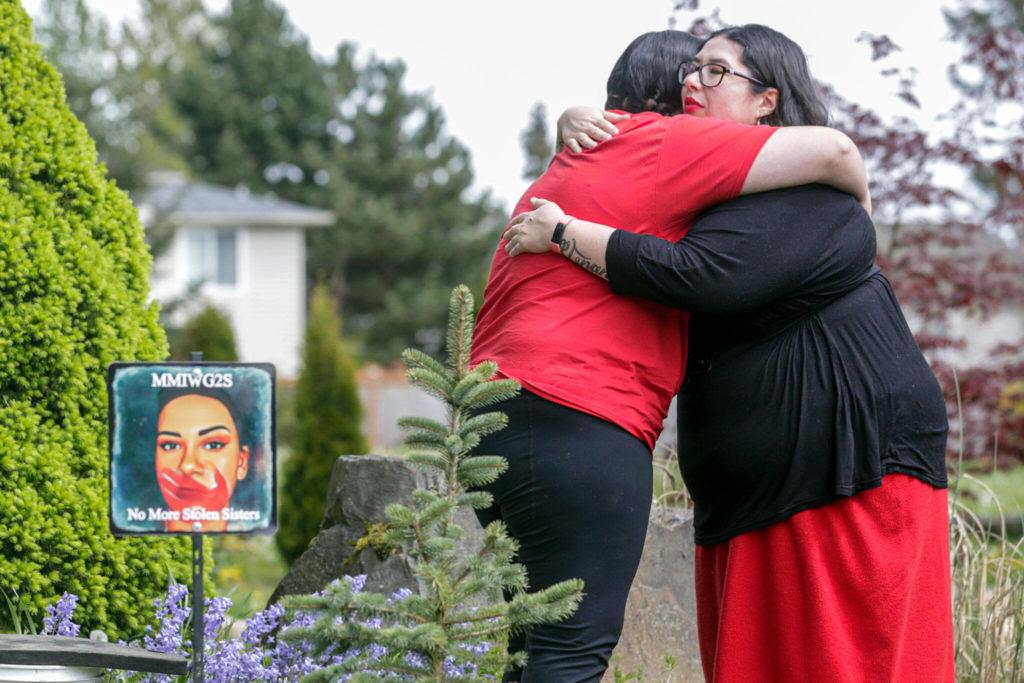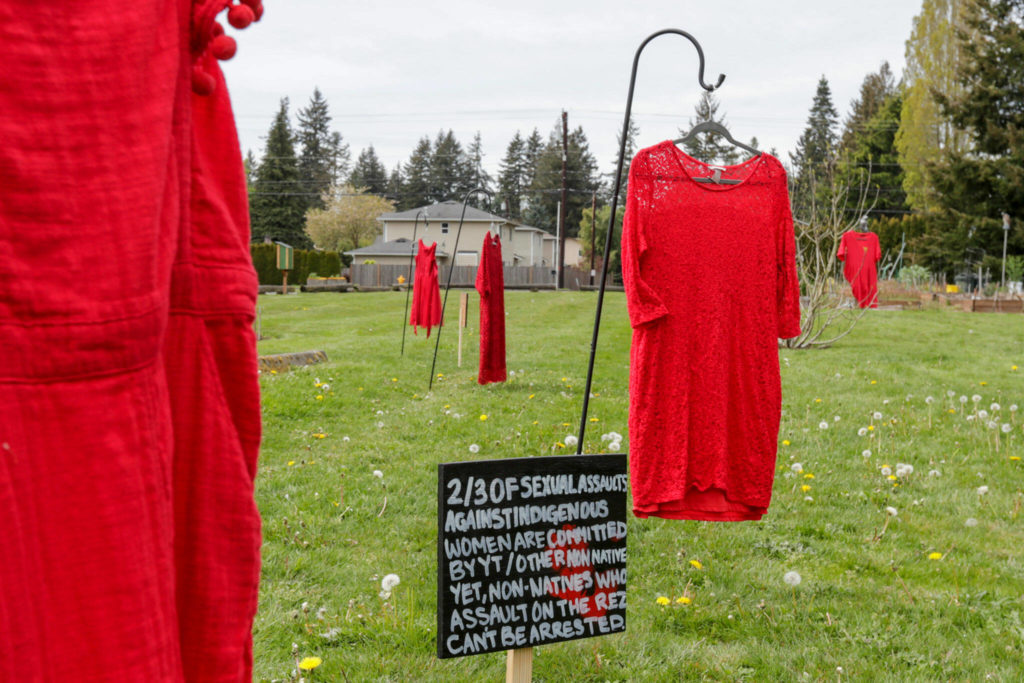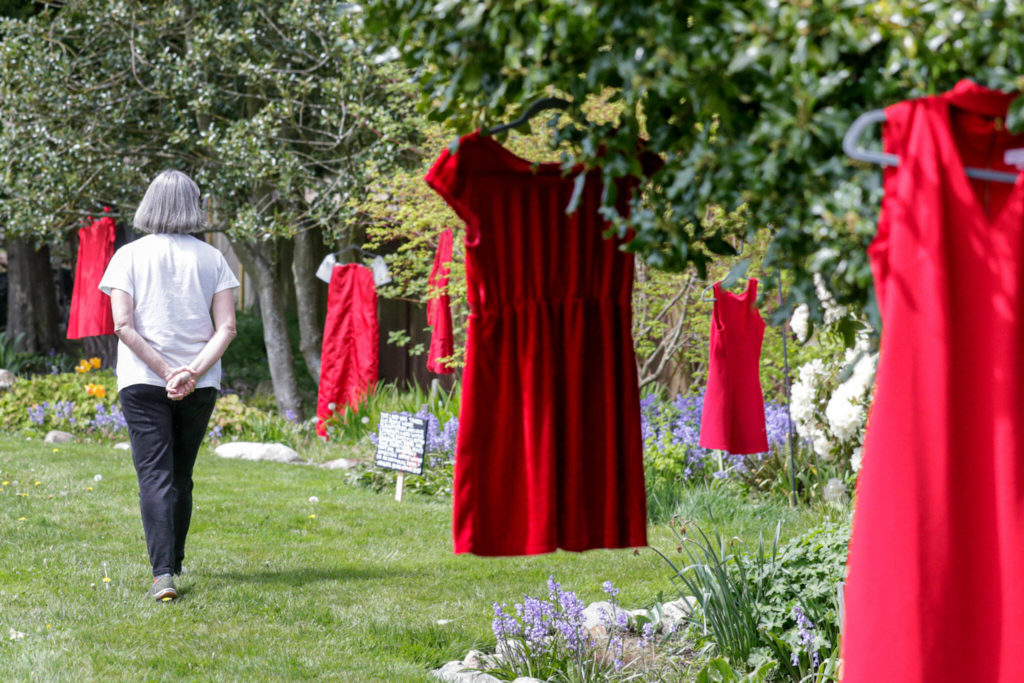EDMONDS — Jennifer Bereskin held Edmonds teen Kyra Isaac tightly in her arms on the Edmonds Lutheran Church lawn Wednesday afternoon.
In front of them, church leaders and advocates for missing and murdered Indigenous persons (MMIP) had patted down dark, wet dirt around a seedling planted in honor of Indigenous people who have been murdered or gone missing. Around the church lawn, red dresses hanging on trees and shrubs blew in the breeze, visual reminders of Indigenous women lost.
Isaac, a member of the Edmonds church, organized an installation of the Red Dress Project at the church to spread awareness of the MMIP crisis. She did it out of necessity.
“Knowing that I personally am at higher risk of being missing or murdered,” she said, “I don’t want it to be accepted anymore.”
May 5 is a national day of awareness for Indigenous people who go missing and are killed each year. As of this week, there were 126 such cases active in Washington, according to the State Patrol.
The Red Dress Project installation will remain at the Edmonds Lutheran Church through Monday. The tree planted at the opening ceremony will remain as a living memorial on the church campus.
The ceremony was the first MMIP awareness event in Edmonds that Bereskin, of Snohomish and Unangax descent, has seen in her lifetime.
“When I was 15 years old and my family was experiencing homelessness, I was nearly trafficked off of Highway 99 over there by the Safeway,” Bereskin said.
“We didn’t call the police because we’d already been experiencing police brutality,” she said. “As as a child, you should feel protected in your community. You should feel like you have the ability to be safe, and that if you call the police, or if you ask for help from the system, that the system is going to do their job.”
But that hasn’t been the reality for many Indigenous families.
Isaac serves in the Seattle Indian Health Board’s youth leadership, the Kiis Council. She invited Abigail Echo-Hawk, chief research officer for the Seattle Indian Health Board, to speak at the remembrance event.
Echo-Hawk co-authored a groundbreaking report in 2018 that finally put data behind stories Indigenous leaders had been telling lawmakers and law enforcement for years.
The report identified 506 unique cases of missing and murdered American Indian and Alaska Native women and girls across 71 cities. Of those, 71 cases were in the Washington state. Seattle had the highest number: 45.
According to the National Institute of Justice, about four out of five Indigenous women have experienced violence, and more than half of all Indigenous women experience sexual violence.
Awareness is the first step to addressing the crisis, Echo-Hawk said. And it shouldn’t be the responsibility of Indigenous youth like Isaac.
“It also means you have to confront the traumas that exist within our communities as a result of ongoing colonialism and attempted genocide,” Echo-Hawk said.
Pamela Bond SeaMonster put down her microphone to tell a traditional story for the dozens of community members in attendance Wednesday.
She described a rabbit who was slowly stripped of his limbs, leaving him unable to continue singing and beating his drum. That story, passed down to Bond SeaMonster from family, always stuck with her.
“As I got older and I was looking for ‘rabbit’ in my classroom all the time,” Bond SeaMonster said. “I wanted to make sure everybody loved ‘rabbit,’ because … I thought ‘rabbit’ was that oppressed little boy or that little girl.”
Over the years, she said she realized “rabbit” was her dad. He was put in the government-run boarding school on the Tulalip reservation, where “he had all of his pieces ripped apart,” she said. “He got ripped up off the land he belongs and sent out to other places. He was ripped apart as a human being. He wasn’t allowed to speak his language. His beautiful long hair that went down past his bottom: cut off.”
Understanding the trauma her dad and generations have experienced — as a result of the federal government’s efforts to colonize, sterilize and assimilate Indigenous people — help to explain the present-day struggles, she said.
Those federal agents “might have chosen to work side-by-side with us,” said Cathy Baylor, of the Flathead Nation. “They might have chosen to work with us to build a society together. But instead, they chose rape, plunder and murder.”
Then, in 1978, tribal criminal jurisdiction was revoked. For years, until the Violence Against Women Act was first enacted, serious crimes by non-Native offenders often went unpunished in Indian Country.
“So now, today, in direct line with the actions of the past,” Baylor said, “our women are disappearing.”
Isabella Breda: 425-339-3192; isabella.breda@heraldnet.com. Twitter: @BredaIsabella.
Talk to us
> Give us your news tips.
> Send us a letter to the editor.
> More Herald contact information.




























